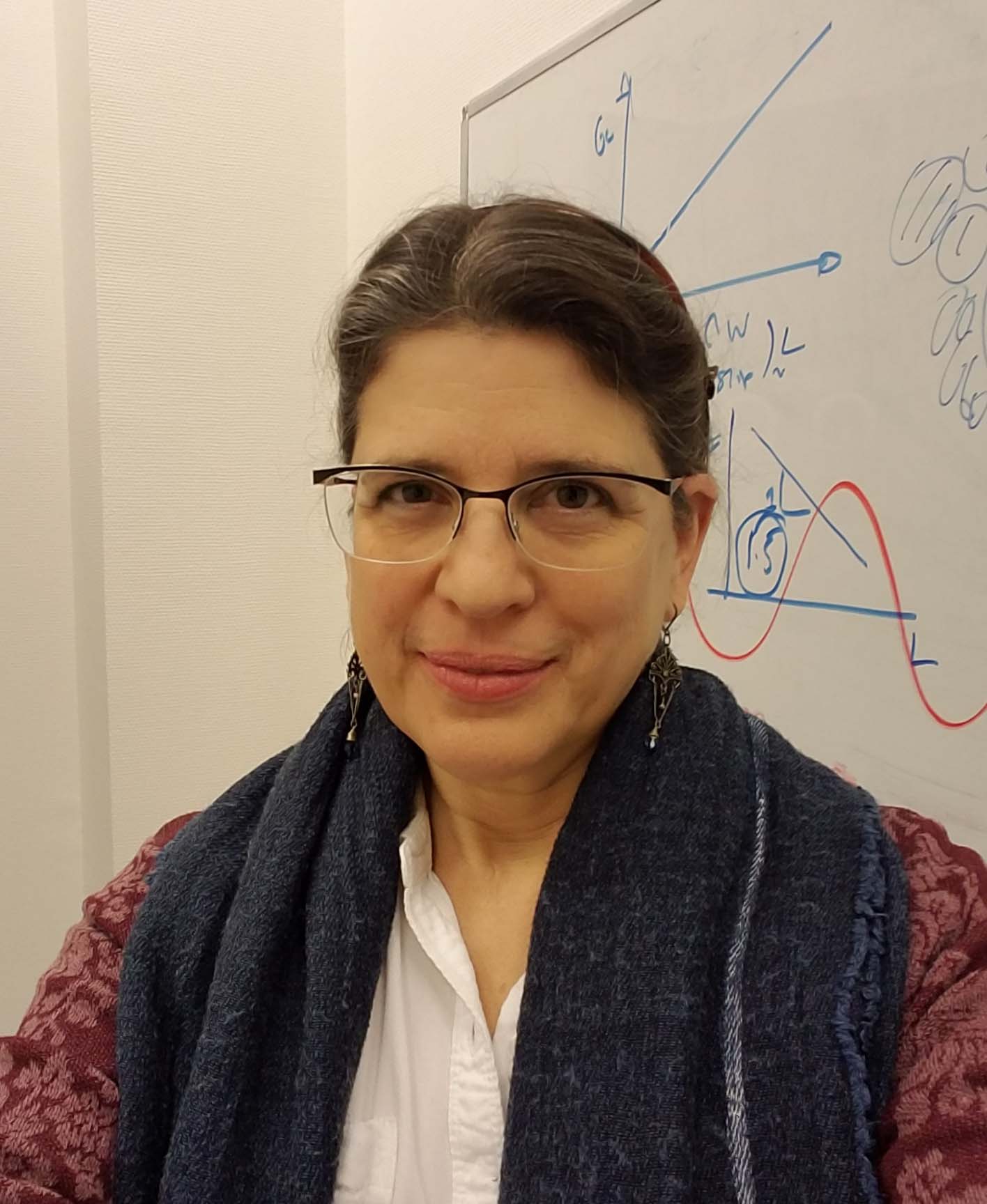
30 Nov Pr Pamela Burnley
Pamela Burnley travaille sur une série de problèmes géophysiques, en se concentrant principalement sur la physique des minéraux et des roches. Elle s’intéresse à la déformation des matériaux terrestres qu’elle étudie en combinant expérimentation, caractérisation microstructurale et modélisation numérique. Pamela a obtenu son doctorat à l’Université de Californie Davis en 1990 et a travaillé dans plusieurs institutions, notamment l’Université de Princeton, l’Université du Colorado, Boulder et la Georgia State University. Elle est actuellement professeure associée au département de géoscience de l’Université du Nevada à Las Vegas.
anglais:
Pamela Burnley works on a range of geophysical problems with a primary focus on mineral and rock physics. She is interested in the inner workings of deforming earth materials which she investigates using a combination of experimentation, microstructural characterization and numerical modeling. Pamela earned her PhD at the University of California, Davis in 1990 and has worked at a number of institutions including Princeton University, the University of Colorado, Boulder and Georgia State University. She is currently an Associate Professor in the Geoscience Department at the University of Nevada, Las Vegas.
site web: https://geoscience.unlv.edu/people/department-faculty/pamela-c-burnley/
Publications récentes:
Kaboli, S. and Burnley P.C. (2018) Direct Observations of Crystal Defects in Polycrystalline Diamond. Materials Characterization v. 142, p. 154-161 https://doi.org/10.1016/j.matchar.2018.05.036
Mazzucchelli, M. L., Burnley, P., Angel, R J., Morganti, S. Domeneghetti, C. M., Nestola F. and Alvaro, M. 2018 Elastic geobarometry: errors arising from the geometry of the host-inclusion system. Geology, 46 (3): p.231–234, https://doi.org/10.1130/G39807.1
Kaboli, S., Burnley, P.C., Xia, G. and Green H.W. II 2017 Pressure dependence of creep in forsterite olivine: comparison of measurements from the D-DIA and Griggs apparatus. Geophysical Research Letters, 44, 10,939–10,947. https://doi.org/10.1002/2017GL075177
Kaboli, S. and Burnley P.C., 2017 ECCI, EBSD and EPSC Characterization of Rhombohedral Twinning in Polycrystalline α-Alumina Deformed in the D-DIA Apparatus. Journal of Applied Crystallography, 50, 14p. https://doi.org/10.1107/S1600576717013991.
Haber, D.A., Burnley, P.C., Adcock, C.T., Malchow, R.L., Marsac, K.E.,and Hausrath, E.M., 2017, Modeling Background Radiation in Southern Nevada. Journal of Environmental Radioactivity, v. 171, p 41–64, https://doi:10.1016/j.jenvrad.2017.01.020`
Haber, D.A. Malchow, R.L., Burnley, P.C., 2017 Monte Carlo Simulations of the Gamma-Ray Exposure Rates of Common Rocks. Journal of Environmental Radioactivity, v. 167 p 20–25, https://doi: 10.1016/j.jenvrad.2016.11.013
Marsac, K.E., Burnley, P.C., Adcock, C.T., Haber, D.A., Malchow, R.L., Hausrath, E.M., 2016, Modeling background radiation using geochemical data: A case study in and around Cameron, Arizona. Journal of Environmental Radioactivity, v.165 p. 68- 85, OSTI ID 1325309, https://doi: 10.1016/j.jenvrad.2016.07.012
Burnley, P. C., 2015, Elastic Plastic Self Consistent (EPSC) Modeling of Plastic Deformation in Fayalite Olivine. American Mineralogist. V. 100, p.1424 – 1433, OSTI ID 1332345, https://doi: 10.2138/am-2015-5234CCBYNCND

